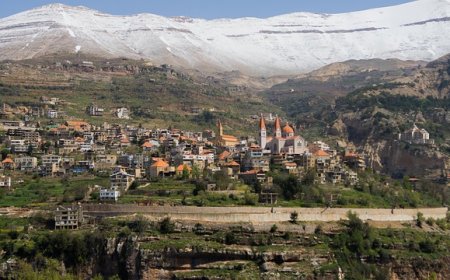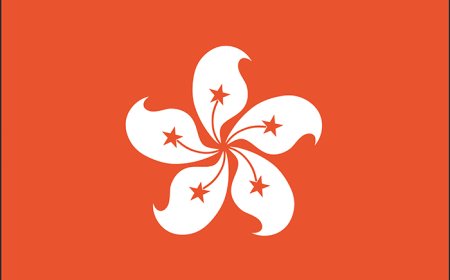Turkmenistan for Students: Geography, Culture, and Ancient Desert Civilizations
Discover Turkmenistan for kids. Learn about deserts, ancient cities, and Turkmen culture. Includes fun facts, vocabulary words, and a quiz
🇹🇲 Turkmenistan: Land of Deserts, Marble, and Ancient Routes
Introduction
Turkmenistan is a Central Asian country known for its vast deserts, marble-filled capital, and deep historical roots along the Silk Road. It is mostly dry and flat, but beneath its surface are large reserves of natural gas. From ancient cities buried in sand to modern monuments and white-stone buildings, Turkmenistan is a land of mystery and contrast.
With a small population and lots of space, life in Turkmenistan is shaped by both the Karakum Desert and long-standing cultural traditions. It’s one of the world’s least visited countries, making it one of the most unique places to learn about.
Geography and Landscape
Turkmenistan is bordered by Kazakhstan, Uzbekistan, Afghanistan, Iran, and the Caspian Sea. Most of the country is covered by the Karakum Desert, whose name means “Black Sand.”
Despite being mostly desert, Turkmenistan has rivers and oases that allow farming in some areas. The Amu Darya River flows through the north and is vital for irrigation.
Turkmenistan has a continental desert climate. Summers are extremely hot and dry, while winters are cool with little rain. Sandstorms can sometimes sweep across the desert.
One of the most unusual sights in the country is the Darvaza gas crater, also called the “Door to Hell.” It’s a fiery pit created when a natural gas field collapsed and was lit on fire in the 1970s to prevent gas leaks—and it’s been burning ever since!
Cities and Regions
The capital of Turkmenistan is Ashgabat, a city famous for its wide boulevards, fountains, and white-marble buildings. In fact, it holds a Guinness World Record for having the highest number of white marble buildings in any city.
Ashgabat features museums, giant monuments, and futuristic architecture. Many buildings and statues honor Turkmen leaders and national pride.
Other important places include:
- Mary – Near the ancient ruins of Merv, once one of the largest cities on the Silk Road
- Dashoguz – In the north, near the ancient city of Kunya-Urgench
- Turkmenabat – A growing industrial city on the Amu Darya River
Outside the cities, life is quieter and more traditional, with people living in villages or farming communities, often surrounded by desert.
People, Language, and Culture
Turkmenistan has about 6 million people, most of whom are ethnic Turkmen. There are also smaller groups of Uzbeks, Russians, and others. The official language is Turkmen, related to Turkish and written in the Latin alphabet.
The main religion is Islam, practiced in a moderate and personal way. Many people also celebrate folk traditions passed down through storytelling, music, and crafts.
Turkmen are renowned for their weaving, especially Turkmen carpets, world-famous for deep red colors and intricate designs. Traditional clothing—long tunics, patterned hats, and jewelry—is often worn at festivals.
Turkmen culture also celebrates horses, especially the Akhal-Teke breed, known for speed, endurance, and shiny golden coats.
Food and Daily Life
Turkmen food is influenced by nomadic and farming traditions. Meals are hearty, with meat—especially lamb and chicken—at the center. Rice, bread, and vegetables accompany most dishes.
Popular dishes include:
- Plov – Rice with meat and carrots, cooked in a large pot
- Ichlekli – A meat pie often eaten at family gatherings
- Chorba – A soup of meat, potatoes, and spices
- Gok chai – Green tea, served with nearly every meal
In cities, people live in apartment buildings and work in offices, shops, or government jobs. In rural areas, life revolves around farming, herding, and family.
School is free; children study Turkmen, math, science, and often Russian and English. National pride is strong—students wear uniforms and participate in patriotic events.
History of Turkmenistan
Turkmenistan has been inhabited for thousands of years, home to ancient civilizations like Merv and Kunya-Urgench, major centers on the Silk Road.
Over time, it was ruled by the Persians, Arabs, Mongols, and Russians, each leaving language, religion, and trade legacies.
In the 1800s, Turkmenistan joined the Russian Empire and later the Soviet Union, when agriculture and industry expanded, though traditions were often suppressed.
In 1991 it became an independent country. Since then, strong presidential leadership has built a unique national identity, with strict media and travel policies.
Nature and Wildlife
Despite its dryness, Turkmenistan hosts desert-adapted wildlife:
- Caracals – Desert wildcats
- Goitered gazelles
- Jerboas – Small hopping rodents
- Desert foxes
- Birds of prey – Hawks and eagles
Nature reserves like Gaplangyr Reserve protect endangered species. The Karakum Canal, one of the world’s longest irrigation canals, brings water to farms and cities from the Amu Darya River.
Vocabulary List
| Word | Definition |
|---|---|
| Karakum Desert | A large desert covering most of Turkmenistan |
| Darvaza gas crater | A fiery pit of natural gas burning since the 1970s |
| Silk Road | An ancient trade route connecting China and Europe |
| Akhal-Teke | A Turkmen horse breed famed for its beauty |
| Ichlekli | A Turkmen meat pie served at special events |
| Marble | White stone used in buildings and statues |
| Plov | A rice dish with meat and vegetables common in Central Asia |
| Turkmen | The main ethnic group and language of Turkmenistan |
👧🧒 Kid-Friendly Summary
Turkmenistan is a desert country in Central Asia with shiny white cities, ancient ruins, and a burning gas crater in the sand! People speak Turkmen, eat delicious meat and rice dishes, and make beautiful carpets.
The country has horses, hot summers, and a long history on the Silk Road. Though not many tourists go there, it’s full of amazing stories, old cities, and a strong national identity.
🧠 Interactive Quiz: What Do You Know About Turkmenistan?
1. What desert covers most of Turkmenistan?
A) Gobi
B) Sahara
C) Karakum
D) Kyzylkum
✅ Answer: C) Karakum
2. What is the capital of Turkmenistan?
A) Tashkent
B) Ashgabat
C) Dushanbe
D) Baku
✅ Answer: B) Ashgabat
3. What is the Darvaza gas crater also called?
A) The Fire Pit
B) The Burn Zone
C) Door to Hell
D) Volcano Eye
✅ Answer: C) Door to Hell
4. What famous animal comes from Turkmenistan?
A) Arabian horse
B) Mustang
C) Akhal-Teke horse
D) Zebra
✅ Answer: C) Akhal-Teke horse
5. What food is a rice dish with meat and carrots?
A) Ichlekli
B) Plov
C) Chorba
D) Noodles
✅ Answer: B) Plov
6. What ancient trade route passed through Turkmenistan?
A) Inca Trail
B) Spice Route
C) Silk Road
D) Viking Path
✅ Answer: C) Silk Road
7. What material is used in many Ashgabat buildings?
A) Brick
B) Wood
C) Marble
D) Clay
✅ Answer: C) Marble
8. When did Turkmenistan gain independence?
A) 2000
B) 1991
C) 1975
D) 1960
✅ Answer: B) 1991



















































